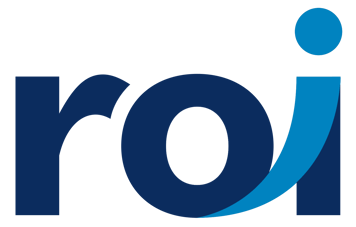It's no longer news that the healthcare industry has adopted technologies such as artificial intelligence (AI) to its advantage. Organizations are always trying to improve quality, reduce costs and ensure patients have quick access to care. One major technology in use is the Internet of Things (IoT). This technology involves the collection and analysis of data from various sources for business management, personalization, and practical purposes. With IoT being used more frequently, organizations should understand how they can leverage on this technology to maintain high standards when it comes to patient care.

How do IoT devices work?
To provide a better understanding of how IoT devices are used within healthcare, let's first look at what they are. IoT devices are simply gadgets, sensors, or even microchips that can connect with other devices wirelessly. Connecting with various devices creates a network that can gather information from a variety of sources. These sources could be environmental elements such as temperature, humidity, or even security information in the case of home IoT devices.
The main advantage of IoT in healthcare is the access it gives to data and how this can be used to make decisions for patient care. For example, sensors on hospital beds monitor patients' heart rates while cameras placed within wards allow nurses and doctors to check whether a patient needs attention at any given time. This reduces the need for them to continually check on clients which means they can focus more on their duties than monitoring which can be time-consuming.
Types of IoT Devices Used in Healthcare
Within the healthcare sector, there are several types of IoT devices that are commonly used. These include, but are not limited to:
- Wearable technology: Devices such as wristbands or smartwatches can be worn by patients to monitor their heart rate and other vital signs. This helps keep track of how these individuals are doing at any given time based on information gathered from sensors which is processed through data analytics software. Such technology is very useful for providing alerts if a patient's vitals change drastically regardless of whether they're being monitored or not. This wearable tech also doubles as an activity tracker since it is paired with smartphones and collects various health-related information including calories burned while exercising, sleep data, etc. Organizations can use this data to improve the lifestyle of patients and recommend programs that will help them achieve better health.
- Sensors: Such devices collect information from environmental sources such as temperature, humidity, or even security elements within a building (e.g., doors, windows). This helps organizations to maintain timely records since they are alerted whenever there's a change in any of these factors which is critical given that these could be early signs of an impending disaster. Analytics software processes information gathered by sensors for analysis and decision-making purposes. Sensors come in many different forms such as contact, pressure, and motion-detecting switches designed to monitor whether a door or window has been always opened for safety purposes. Others like industrial sensors which are temperature, humidity, and motion detectors are used to help improve processes within an organization. Some non-contact sensors such as infrared sensor switches are very accurate in tracking high traffic areas that would need constant monitoring while other contact types like pressure-sensitive switches can be placed on doors or windows to monitor whether they have been opened by unauthorized personnel.
- Smart building systems: These could be home-based or commercial building control systems that are used to monitor heating, lighting, and security. In healthcare settings, these include emergency call boxes that can be reached using a single button located in any room within an organization's facility along with temperature and smoke detectors.
- Smart homes: The home is probably one of the most important places since it allows individuals to relax following a stressful workday while taking their medication according to recommended schedules. This is where connected personal assistants like Amazon's Echo come into play letting users control lights, locks, heating, and other appliances remotely using Alexa-enabled devices such as smartphones. Also, IoT allows individuals to monitor their personal health using smart bathroom scales that can track the progress of patients suffering from obesity or diabetes.
- Smart healthcare: These are systems designed to provide convenient diagnosis or treatment options based on collected information which could help patients avoid long wait times or even save lives especially in critical situations. For example, many healthcare providers have begun using IoT platforms within their IT infrastructure allowing them to transfer data more effectively between different departments including medical records, insurance claims, and even pharmaceutical companies.
Why do patients embrace the use of these devices?
One great advantage with IoT devices is that they improve patient engagement, which makes them more cooperative. For example, many hospitals are now implementing 'smart beds' into their wards for patients suffering from mental and physical ailments as well as chronic conditions. These beds have sensors embedded in the mattress and pillow which monitors a patient's sleep patterns and heart rate during the night so that doctors can see if certain medications are effective or not. Patients respond positively when health workers communicate through mobile applications or online portals as opposed to meeting them face-to-face. This means that they can manage their health better and do not feel intimidated when it comes to speaking up about personal matters.
What are the benefits of using these devices?
Aside from the fact that IoT can help patients get access to accurate medical information without having to visit a clinic, there are other advantages too with such technology being used in healthcare environments. These include:
- Improved management of resources and patient care. One good example is an automated dispensing system that enables pharmacies to dispense drugs automatically via voice command or image analysis which helps reduce errors and protect patients against unethical drug theft. With IoT helping health firms collect patient information and make the right decisions, it means that they can offer better care.
- Saving on operational and maintenance costs. Aside from increasing efficiency when it comes to delivering medical services, what's more, is the fact that using IoT devices in hospitals not only reduces errors but also helps cut down on overheads by enabling health workers to get information quickly and directly – without having to travel long distances for examinations or consultations. For example, wearable devices such as smartwatches can be used by doctors and nurses in the operating room so that they can receive real-time updates during surgeries instead of taking their focus off patients. Also, if a fitness tracker detects heart rate spikes or abnormal beats then this provides an early warning sign about potential cardiac problems which saves lives. And the same applies to devices that monitor vital signs so that medical teams can respond quickly when something is wrong.
- Improving the quality of patient life/preventing premature death. The development of IoT in hospitals also helps patients get a better quality of life and reduces the risk of premature death through early detection of health issues. For example, wearables can help doctors measure a patient's heart rate, oxygen levels, blood pressure as well as some other factors which show how they are responding to specific treatments or if they are getting worse over time. As a result, it allows healthcare workers to make accurate assessments without having to physically examine their patients – even when they are in remote locations.
- Improving efficiency and productivity. In addition to lowering costs and improving the quality of care, IoT also helps health firms become more efficient by helping them use resources as effectively and efficiently as possible. For example, industrial automation sensors can help identify high-risk objects in a hospital environment such as those that could cause injury or even death. They alert caregivers if they are not cleaned regularly or moved out of place (such as needles) which means that doctors focus their attention on patients instead of having to worry about other matters.
- Improving accessibility and connectivity. With so much vital information available at their fingertips, doctors can deliver care to patients faster along with improving the level of service by using connected devices such as smartwatches which transmit data directly from patients to medical staff no matter where they are. This improves communication between both parties and ensures that healthcare workers provide better care. And the same applies to patients using their own personal devices to track things such as sleep patterns, heart rate, and other useful data which is sent directly to medical personnel so that they can make better assessments and provide suitable care or recommend certain tests if needed.
The development of IoT in healthcare enables health firms to deliver more convenient care that improves efficiency and saves lives. With the use of connected devices such as smartwatches, fitness trackers, and industrial sensors, doctors can provide better services that reduce patient mortality while saving costs by cutting down on medical mistakes. And with the accelerating pace at which IoT is growing along with its capability to offer a wide range of applications in healthcare, we can expect to see even more improvements in the quality of care delivered to patients in the coming years.
